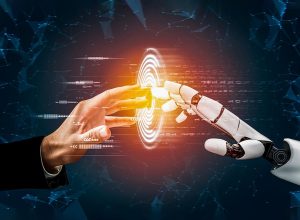
AI Digital Divide: Today, almost a quarter of Australians are excluded from the digital divide. This means that they are deprived of the social, educational and economic benefits that come with online connectivity. Given this digital divide, countries are now talking about an inclusive artificial intelligence (AI) future.
However, if we do not learn from the current problems of digital exclusion, it will impact people’s future experiences with AI. This conclusion has come from our new research published in AI and Ethics Journal.
What is digital divide?
The digital divide is a well-documented social divide. People on the margins face difficulties when it comes to accessing, affording or using digital services. These losses significantly reduce their quality of life.
Decades of research have given us a rich understanding of who is most at risk. In Australia, older people, people living in remote areas, low-income people and First Nations people are most likely to find themselves digitally excluded.
Entry of world’s first AI software engineer Devin, will develop app in a jiffy
Zooming out, the report shows that a third of the world’s population – representing the poorest countries – remains offline. Globally, the digital gender divide still exists: women, especially in low- and middle-income countries, face significantly greater barriers to digital connectivity.
During the COVID pandemic, the effects of digital inequality became all too apparent. As large parts of the world’s population became ‘locked in place’ – unable to go out, visit shops or have face-to-face contact – anyone without digital access was seriously at risk.
The consequences ranged from social isolation to reduced employment opportunities, as well as lack of access to vital health information. The UN Secretary General said in 2020 that the digital divide is now a matter of life and death.
It’s not just a question of access
Like most forms of exclusion, the digital divide operates in several ways. It was originally defined as a gap between those who have and those who do not have access to computers and the Internet. But research now shows that it is not just an issue of access.
Having little or no access reduces familiarity with digital technology and when this happens it erodes confidence, promotes disengagement, and ultimately leads to an internal feeling of not being digitally competent. gives.
AI Teacher: Meet the country’s first AI teacher, know what is special about her
As AI tools increasingly reshape our workplaces, classrooms and everyday lives, there is a risk that AI could deepen rather than narrow the digital divide.
role of digital confidence
To assess the impact of digital exclusion on people’s experiences with AI, we surveyed a representative selection of hundreds of Australian adults in late 2023. We started by asking them to rate their confidence in digital technology.
We found that digital confidence was lower for women, older people, low-paid people and those with less digital access.
We then asked these same people to comment on their hopes, fears, and expectations regarding AI. Across the board, the data showed that people’s perceptions, attitudes and experiences with AI were linked to how they felt about digital technology in general.
In other words, the more confident people felt digitally, the more positive they were about AI.
To create truly inclusive AI, it is important to consider these findings for several reasons. First, they confirm that digital confidence is not a privilege shared by everyone.
Second, they show us that digital inclusion is much more than just access, or even one’s digital skills. How confident a person feels in their ability to communicate with technology is also important.
Third, they show that if we do not fight existing forms of digital exclusion, they may spread across perceptions, attitudes and experiences with AI.
Currently, many countries are moving forward in their efforts to reduce the digital divide. So we must ensure that the rise of AI does not slow down these efforts, or worse, increase division.
What should we expect from AI?
Although there are many risks associated with it, when deployed responsibly, AI can have a significant positive impact on society. Some of these may directly target issues of inclusivity.
For example, computer vision can track the trajectory of a tennis ball during a match, making it audible to blind or low vision spectators.
AI has been used to analyze online job postings to help boost employment outcomes in underrepresented populations such as First Nations people. And, while they are still in the early stages of development, AI-powered chatbots could increase the accessibility and affordability of medical services.
But this responsible AI future can only be possible if we also pay attention to what keeps us digitally divided. To develop and use truly inclusive AI tools, we must first ensure that feelings of digital exclusion do not spread.
This means not only dealing with practical issues of access and infrastructure, but also impacting people’s level of engagement, competency and confidence with technology.
(This article in The Conversation is written by CSIRO’s Sarah Vivian Bentley and Claire Naughtin and is brought to us by PTI)

